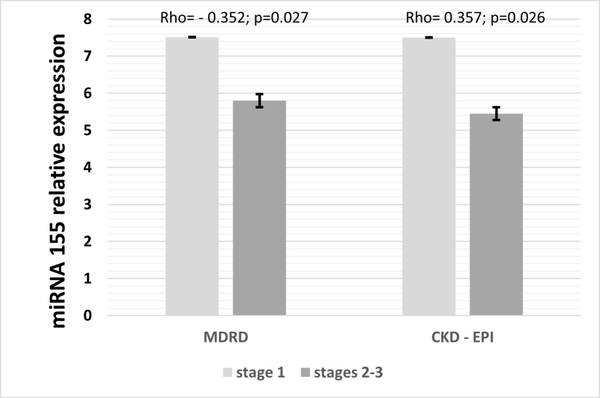-
Home
-
About JCTR
-
Gold Open Access
-
Issues
-
Editorial board
-
Author guidelines
-
Publication fees
-
Online first
-
Special issues
-
News
-
Publication ethics
-
Partners
-
Submit your manuscript
-
Submit your review report
-
Editorial Office
-

This work is licensed under a Creative Commons Attribution-NonCommercial 4.0 International License. ISSN print: 2382-6533 ISSN online: 2424-810X
Volume 7 issue 2
Plasma circulating microRNAs in patients with stable coronary artery disease - Impact of different cardiovascular risk profiles and glomerular filtration rates
Karlis Trusinskis, Maris Lapsovs*, Sandra Paeglite, Evija Knoka, Laima Caunite, Mairita Mazule, Ieva Briede, Sanda Jegere, Indulis Kumsars, Inga Narbute, Ilze Konrade, Andrejs Erglis, Aivars Lejnieks
Trusinskis et al. J Clin Transl Res 2021; 7(2):14
Published online: April 16, 2021
Abstract
Background and aim: Plasma circulating microRNA-126, -145, and -155 are associated with vascular remodelling, atherosclerotic lesion formation and plaque vulnerability. In this study, we evaluated the levels of plasma circulating miRNAs in patients with stable coronary artery disease, different cardiovascular risk profiles and different glomerular filtration rates.
Methods: Forty patients with stable coronary artery disease (CAD) admitted for elective percutaneous coronary intervention (PCI) were enrolled in a prospective study. Before PCI, fasting blood samples were obtained to evaluate clinical parameters and microRNA (miRNA)-126 and miRNA-155 expression. The glomerular filtration rate (GFR) was calculated by the MDRD and CKD-EPI formulas, and the severity of CAD was calculated according to the SYNTAX score. All these parameters were correlated with miRNAs.
Results:The association between miRNA levels and clinical characteristics was evaluated. The expression of miRNA-126 positively correlated with a higher SYNTAX score (r=0.337; p=0.034); however, no significant correlations between miR-126, GFR and clinical characteristics were observed. Higher plasma levels of miRNA-155 correlated with increased levels of triglycerides (r=0.317; p=0.049), C-peptide (r=0.452; p=0.011), and the HOMA index (r=0.447; p=0.012) and a higher body mass index (r=0.385; p=0.015). GFR and miRNA-155 (MDRD - Rho=0.353; p=0.027. CKD-EPI - Rho=0.357; p=0.026) were found to have a moderate correlation, although miRNA-155 had no correlation with the SYNTAX score.
Conclusion: Plasma circulating miRNA-126 levels were increased in patients with severe atherosclerosis as determined by the SYNTAX score. Elevated miRNA-155 expression was observed in patients with stage 1 GFR but was lower in patients with stage 2 and 3 GFR. Plasma circulating miRNA-155 had positive correlations with higher levels of BMI, HOMA index, C-peptide and triglycerides.
Relevance for patients: Although further investigations are needed to confirm the role of miRNA-155 and miRNA-126, they may serve as potential biomarkers detecting severity of CAD, lowering of kidney function and metabolic syndrome.

DOI: http://dx.doi.org/10.18053/jctres.07.202102.014
Author affilation
1. Latvian Centre of Cardiology, Pauls Stradins Clinical University Hospital, Riga, LV-1002, Latvia.
2. Department of Internal Diseases, Riga Stradins University, Riga, LV-1007, Latvia.
3. Faculty of Medicine, University of Latvia, Riga, LV-1050, Latvia.
4. Department of Endocrinology and Internal Medicine, Riga East Clinical University Hospital, Riga, LV-1038, Latvia.
*Corresponding author
Maris Lapsovs
Department of Internal Diseases, Riga Stradins University, Riga, LV-1007, Latvia.
Email: maris.lapsovs@rsu.lv
Handling editor:
Michal Heger
Department of Pharmaceutics, Utrecht University, the Netherlands
Department of Pharmaceutics, Jiaxing University Medical College, Zhejiang, China

